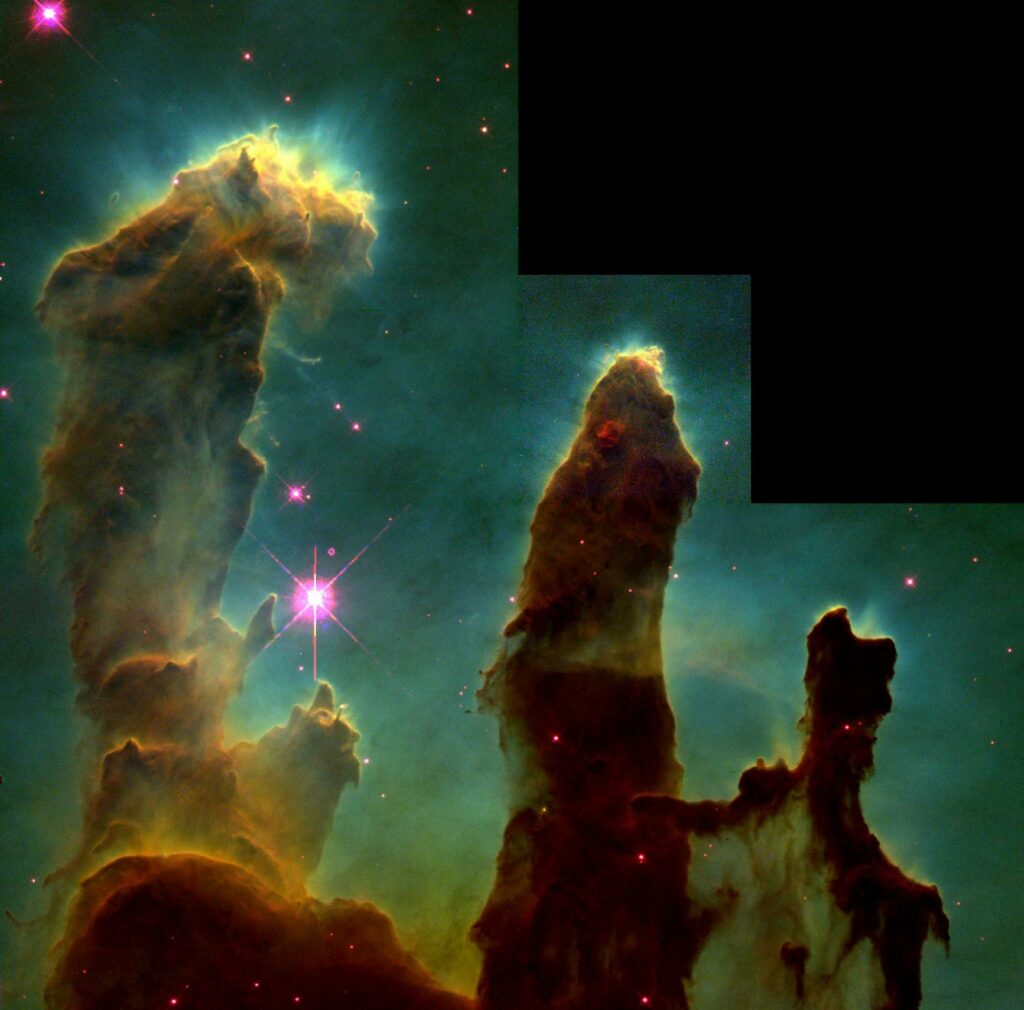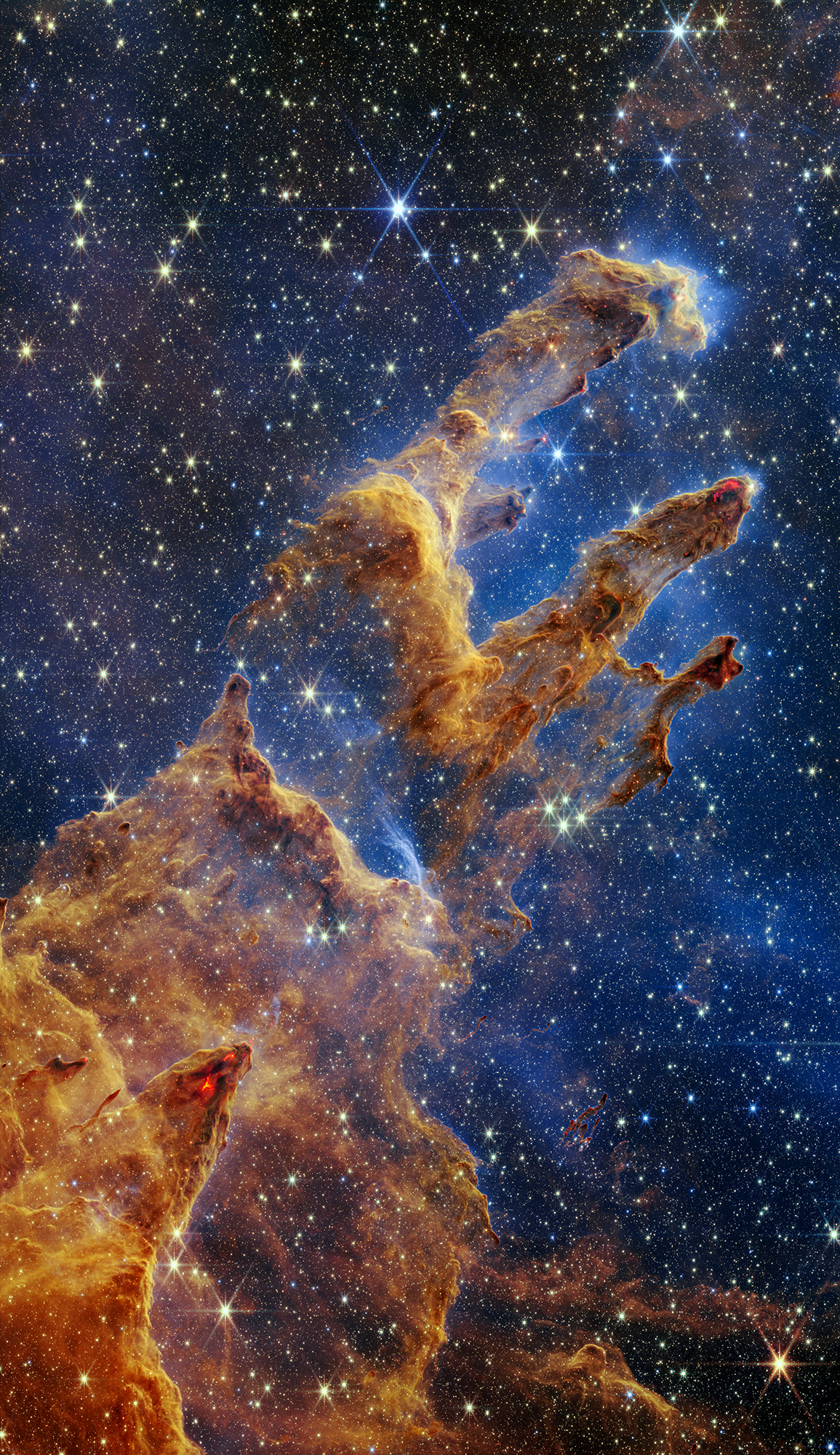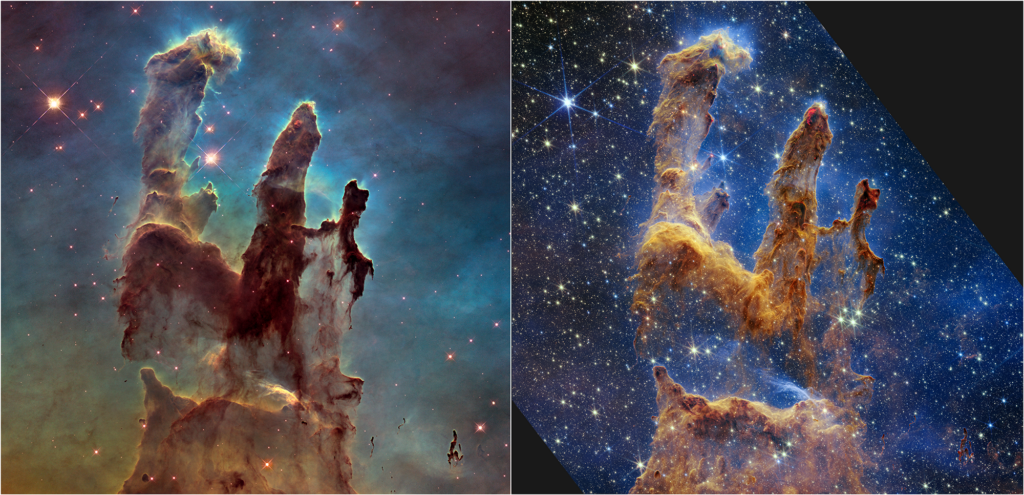NASA has published, made by the James Webb Telescope (JWST), a striking portrait of a cluster of interstellar dust and gas. It is known as the Pillars of Creation.
What are the Pillars of Creation?
The Pillars of Creation are clusters of interstellar gas and dust in the Eagle nebula, located at a distance of approximately 6,500 light-years from the Sun. They were first photographed in 1995 by the Hubble telescope. The image instantly gained popularity and is now considered one of the most significant images obtained by the orbital observatory. In the following years, Hubble returned to the Pillars of Creation several times, making several more detailed portraits.

The Pillars of Creation are mainly composed of cold molecular hydrogen and dust. They were formed under the influence of powerful radiation from several newborn stars that scattered the central part of the Eagle nebula and a section from the Earth. Thanks to this, we got a unique opportunity to look inside the region, where clusters are forming right now, from which new stars may form in the future.

At the same time, according to some scientists, in reality the Pillars of Creation have already ceased to exist. This conclusion is based on images from the recently discontinued Spitzer telescope, which managed to identify a “bubble” consisting of rapidly expanding hot gas. According to some assumptions, it may be a shock wave from a supernova that exploded several thousand years ago. In that case, it should have already reached the Pillars and destroyed them. Just taking into account the distance, the light from this event has not yet managed to reach the Earth.
Pillars of Creation through the eyes of the James Webb Telescope
Thanks to its technical capabilities, the James Webb telescope has the ability to penetrate the dust curtain and capture previously unseen details of the internal structure of nebulae and regions of active star formation. No wonder NASA used it to shoot the Pillars of Creation.

The JWST image was obtained in the near infrared range. A number of newly formed stars can be seen on it, which can be identified by their characteristic bright red color. When clumps of matter with sufficient mass form inside gas-dust clusters, they begin to shrink under the influence of their own gravity, slowly heat up and eventually form new luminaries.
You can also pay attention to the wavy lines resembling lava along the edges of some Pillars. These are jets ejected by still forming stars (their age is only a few hundred thousand years), which are surrounded by protoplanetary disks. When the jets collide with the surrounding matter, shock waves are formed, somewhat resembling a trace from a boat moving in the water. The crimson glow comes from the hydrogen molecules formed during this process. It is especially characteristic of the second and third Pillars, which literally pulsate with activity.

It is worth noting that despite the fact that infrared vision helps JWST to penetrate through the dust curtain, it is impossible to see distant galaxies in the image. The density of gas and dust at the center of the Milky Way is so high that it blocks our view of the deeper universe.
According to https://www.nasa.gov
Follow us on Twitter to get the most interesting space news in time
https://twitter.com/ust_magazine

